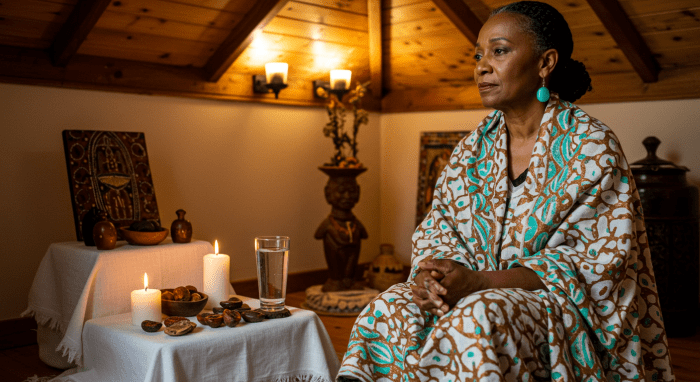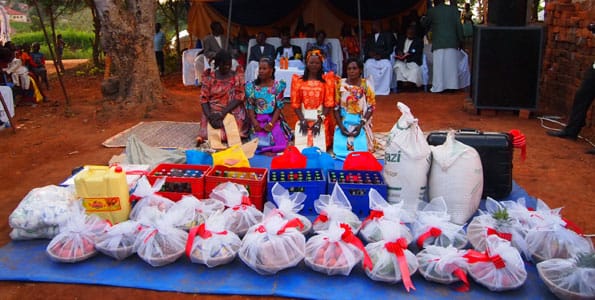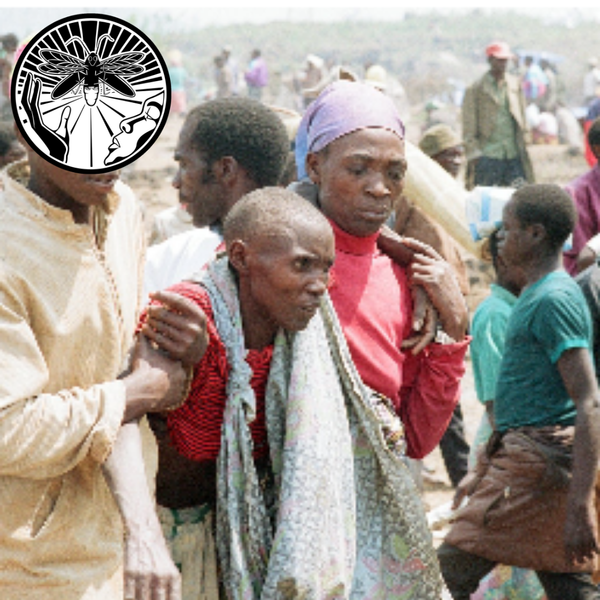Catastrophe in Meritah’s Great Lakes - Part X: Catechism to Cateclysm
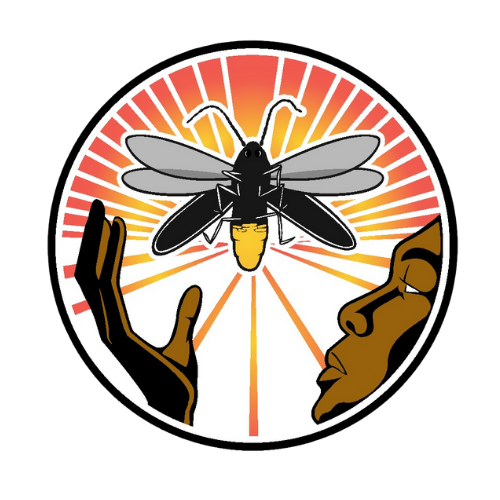
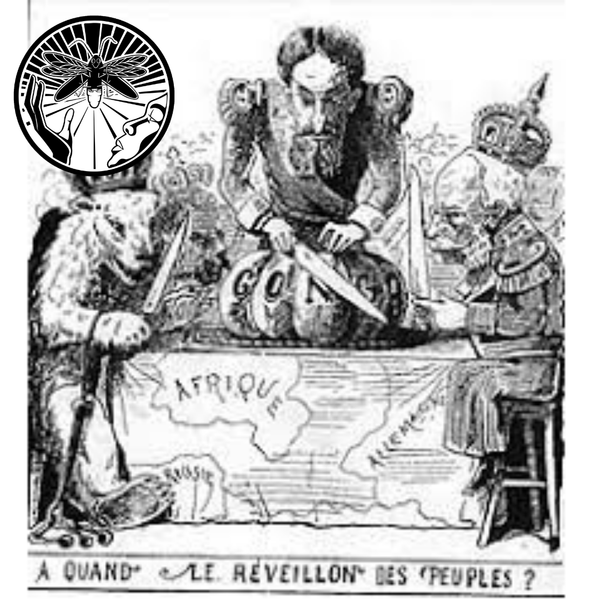
by Kasabez Maakmaah
If the same Heru that arrived on Earth with the mission to combat evil does not see the wars, hungers, assassinations, slavery, genocide, racism, etc. as being the manifestations of evil, or if the God-child perceives all of these facts from a dualistic angle (us vs. them), he will spend his energy helping to destroy the works of his Ancestors.
All this enters into the logic of the battle between the forces of good and evil!
Prophet Neb Naba Lamoussa Morodenibig
Human history in the last 2000 years has been so full of tragedy, it’s beyond our ability to describe. The enslavement, terrorism and genocide of people across the world have led to the extinction of countless tribes, languages and even entire bloodlines. Let’s be clear that no one should be offended by the facts of human history. The abominable state that we have sunken to exposes nothing less than a failure of our species. As we say, “If the truth bothers me, it’s because I’m a liar.” It’s time to stop trying to convince ourselves and each other that we are progressing. The problems humanity is refusing to look at are not going to disappear just because we avert our eyes. The garbage or toxic waste we dump in someone else’s back yard are just not going to disappear…
Let face it, we’re losing. In Rwanda, 1994, about a million killings in 100 days. Congo, 1998 - 2007, 6 million people dead. Apparently 2007 is just when everyone stopped counting, just like how everyone stopped counting how many new “smart” phones and tablets have come out multiplied by how many of each model was made using “conflict minerals” from the Congo. This is not over. We’re still losing: losing our minds, our souls, our humanity.
Before “Independence”
In the previous articles of this series, we have recapped the history leading to this catastrophe. To be clear, this situation was manufactured by political and religious influences introduced by European colonisers. Check the history: there are no recorded instances of these kinds of problems prior to colonialism. We have seen the history up until the point of so-called independence. Catechism (Christian indoctrination) marginalised the traditional Kemetic spirituality which had previously guaranteed the stability and harmony in this region and throughout the world for tens of thousands of years. Catholicism was introduced to the Kongo Empire in the 1400s and, with it, the slave trade was established. The combination has resulted in the decimation of traditional value systems over the last 500+ years.
In Ruandi-Urundi (The former Belgian colonial state, now known as the nations of Rwanda and Burundi), catechism included the introduction of artificial “racial” classifications: Hutu and Tutsi. Under Belgium, these two traditional kingdoms (Rwanda and Burundi) were managed as two separate states with the king of each continuing to rule, but under the manipulation of Belgium. In both of these states, the Catholic Church and Belgian administration supported the Batutsi (Tutsi people) as the rulers of the Bahutu (Hutu people). However, up until around 1960, this cataclysmic divide existed primarily in the minds of the colonisers and the Africans who attended their schools.
In Rwanda, the church and the government began to switch their position in 1959 and began to support the Bahutu against their Tutsi oppressors. The fabricated version of history was taught that the Batutsi had invaded the region several hundred years ago and had ruled over the Bahutu ever since. The reality is, there’s no documented evidence of there ever being a Tutsi people or Hutu People. This oppression only started with the arrival of the European as the population not only had to sustain their own lives, but was also forced to grow massive amounts of coffee to send to Europe at the same time. In 1961, the first anti-Tutsi massacres would take place and the mwami (king) of Rwanda, also Tutsi, was chased from the country. Hutu politicians were given control of the government and declared independence in 1962 although these politicians were educated and controlled by Belgium and the Vatican (see part IIII of this series for details).
In Burundi, a frenzy of political intrigue began in 1958 as 25 parties were created in the next 3 years. Legislative elections in 1961 were followed by the assassination of Rwagasore, leader of the victorious party UPRONA. Independence was declared the following year. Following the massacres of Batutsi in Rwanda in 1961, tens of thousands of Tutsi refugees fled to Burundi. News of the massacres spread in Burundi and introduced the racial element into the political scene charged by ambition on the Hutu side and fear on the Tutsi side. The Mwambutsa, mwami of Burundi attempted to assert reforms, but was ousted in a coup in 1965. Massacres of Batutsi erupted in Burundi and a Tutsi led group took control of the military and took over the government. From then until 1994, Burundi was controlled by Tutsi and Rwanda by Hutu, while both governments were still controlled by their colonisers.
The Congo Crisis
Meanwhile Belgian Congo was “granted independence” in 1960. The new government would be headed by Joseph Kasa-Vubu as president and Patrice Lumumba as Prime Minister. Conflict would ensue almost immediately as the army began to defect en masse from the Belgian officers.The mineral-rich, southern state of Katanga subsequently seceded with the support of Belgium and White mercenaries. Joseph Mobutu was installed as army chief of staff. The government asked the UN for help reclaiming the Katanga province, but they refused. Lumumba then sought and received aid from the Soviet Union (Communist Russia). This put him at odds with Kasa-Vubu and Mobutu and he was removed from his position and put on house arrest. The Soviet military advisors were dismissed. All of this took place in 1960, beginning what is now known as the Congo Crisis, which lasted until 1965.
Lumumba was executed in 1961 after having escaped from house arrest, apparently on orders from the US and Belgium. The UN eventually helped end the Katanga secession in 1962 after its mission leader was killed in a plane crash while attempting to land in a Congo airport. Then another rebellion took place in central and eastern Congo. This Simba (lion) rebellion was backed by the Soviets and Cuba and relied heavily on witchcraft. Even Che Guevara travelled to Congo to lend his support along with a few hundred military advisors. While the communist bloc supplied weapons to Simba through Burundi, the CIA was based in Rwanda. Ironically, while these Cold War opponents supplied opposing sides in this bloodbath in Congo, their bases of operations were next door to each other, yet there was no conflict between them. This conflict would end in 1965 with the defeat of the Simbas. Further unrest in the reunited Congo was followed by a military coup by Mobutu who ruled the country by decree until 1997.
Mobutu changed the name of Congo to Zaire (the Portuguese name for the Congo River which was loosely based on its name from the Kongo language, Nzere) in 1971 and changed his own name to Mobutu Sese Seko Kuku Ngbendu Wa Za Banga (The warrior who knows no defeat because of his endurance and inflexible will and is all powerful, leaving fire in his wake as he goes from conquest to conquest). His program Authenticité required that all Congolese citizens and cities have an African name.
The Congo Crisis is a classic example of divide and conquer in which two colonial powers who are supposedly enemies divide a population against each other. While the Cold War ended without a single shot being fired between the supposed enemies, countless populations were destabilised and cultures destroyed across the world. Congo and Vietnam are two good examples. The proverb “When two elephants are fighting, the grass is trampled,” summarises the plight suffered by the Congolese until the present. This proverb has become a slogan adopted by the Congolese leaders who, having been educated by the Europeans, simply picked up where Belgium left off in the process of destroying their own home and people. While Mobutu held a firm grip in Zaire for 30+ years, rebel factions in Eastern Congo, led by Laurent Kabila would continue fighting until the 1980s.
The Cycle of Violence or The Spread of Evil
During this period, the Tutsi-Hutu divide in Rwanda and Burundi continued to escalate. This drama would play out like mass scale gang retaliations with no one apparently remembering why they were fighting except to get back at the other. As Batutsi fled Rwanda into Burundi, their stories fed the anti-Hutu frenzy in Tutsi dominated Burundi. Burundian Hutu refugees in Rwanda had the same effect. For example:
1964: A supposed attack led by a few hundred Tutsi refugees from Burundi was stopped by Belgian troops outside of Kigali (Rwanda’s capital) on Christmas, 1963. A manhunt of Batutsi ensued leaving at least 10,000 dead. The Bahutu began to refer to the Batutsi as inyenzi (cockroaches) who had infiltrated their country. Hundreds of thousands fled to neighboring countries.
1972: The “scourge” in Burundi where several thousand Batutsi were massacred during a Hutu rebellion in late April. In May and June, between 150,000 and 300,000 Bahutu were killed in retaliation, and hundreds of thousands more Bahutu fled to Zaire, Rwanda and Tanzania. Subsequently, Bahutu were mostly eliminated from government and military.
In Rwanda, General Juvenal Habyarimana led a coup and deposed President Gregoire Kayibanda in 1973. Habyarimana would stay in power for the next 20 years. Though the violence against Batutsi was less notable during this period, tensions were not eased. For example, Batutsi were only allowed to made up 9% of the school population based on their percentage of the total population. Habyarimana leaned heavily on Catholicism and the church and state worked hand in hand as it had during colonialism. The relationship with the church remained the gateway to favor with powerful Europeans.
During this period, Rwanda faced severe cultural repression as traditional oral literature, music, dance or any reference to pre-1959 Rwanda were condemned as “feudal” and representing Tutsi domination. These traditions were a threat to the new leadership and the European colonisers because they were tied to the Rwandan Kingships which are the legitimate authority of Rwanda. While traditions were censored, pop music from Zaire was presented as an alternative. Despite the elephant in the room, things were relatively quiet in Rwanda and Burundi for about 15 years, despite the occasional coup d’etat which is apparently equivalent to an election in many colonised places.
Uganda, Congo and Rwanda’s neighbor to the north, had similarly disastrous events following “independence”. While the Belgian Congo and Ruanda-Urundi had been Belgian colonies, Uganda was colonised by Britain. Also in contrast to Rwanda and Burundi, which had been autonomous kingdoms before colonisation and shared one colonial religious cult, Catholicism, Uganda was divided and subdivided by its diversity. Uganda was home several traditional kingdoms, large Islamicised Sudanese population, the Catholic and Anglican churches, a merchant class of almost 100,000 Asians (mostly Indian) which controlled the economy not to mention cold war influences which would also play a role. All of these diverse influences would become dividing lines for the colonised Ugandan elite who were eager to attain positions of power which were being vacated by the British.
Britain, like Belgium, would begin preparing Uganda for independence in the 1950s with the formation of political parties and other political reforms. Uganda would become “independent” in 1962, the same year as Rwanda and Burundi. This further illustrates the degree to which the global independence movements at that time were simply the next planned step of colonialism rather than the result of a glorified struggle against imperialism. It’s strikingly similar to the emancipation proclamation almost exactly 100 years prior in which the enslaved people in the United States were supposedly freed, while the reality remains we have simply entered a new form of enslavement which requires less supervision by the enslavers. Observe that, until now, whether in Africa or the US, we have all been convinced of the need to go work (slave) for someone in order to simply survive and no one has to beat us into submission to make us do it.
Uganda’s “independence” was followed by 25 years of horrors in which around a million people were killed and the educated elite of Uganda manipulated the population to fight each other as they struggled to attain the number 1 spot. Most notable was the military dictatorship of Idi Amin, in which 300,000 to 500,000 people were reportedly killed between 1971 and 1979. Following another coup that pushed him from power in 1979, another civil war, known as the “Ugandan Bush War” reportedly claimed 300,000 more lives between 1981 and 1986. This ended with the rebel leader, Yoweri Museveni becoming president. Museveni who is still president now in 2016, would play an instrumental role in the wars in Rwanda and Congo from 1990 until at least 2004.
Cataclysm
SETH is the kind of God who will cry when humans laugh and laugh when we cry. He’s the kind of God who loves when plants aren’t growing and hates when they’re growing. He’s the kind of God who loves drought and hates the rain. He’s the kind of God who loves when life is threatened, hates when we feel safe.
Prophet Neb Naba Lamoussa Morodenibig
However, the nature of evil is that it never gives up, it only retreats to plan its next attack. If evil isn’t aggressively attacked, it will always find a weak point to exploit.
A Burundian Hutu official described the political climate in Burundi during that period.
There were some insatiable leaders who, to satisfy their shameful ambitions, turned ethnic division into a political strategy. As such, if they were Tutsi, they denounced a Hutu peril that had to be countered, complete with a need for supporting conspiracies; if they were Hutu, they disclosed a “Tutsi apartheid” that had to be fought againsts. And that set in motion a diabolical scene in which emotion took precedence over reason.
These “insatiable leaders” represent the product of catechism and European education, a mindset that can be seen as prevalent in political arenas of most nations, in which any lie will be told in order to manipulate the masses to stay subservient, whatever the cost.
In Uganda, Rwandan Tutsi refugees had joined the ranks of the Ugandan rebellion led by Yoweri Museveni, which took over the Ugandan Capital, Kampala, ending the Ugandan Bush War in 1986. These Rwandans established the Rwandan Patriotic Front (RPF) whose goal was ultimately to conquer Rwanda. The RPF garnered support and recruits from the Tutsi diaspora in Uganda, Zaire, Burundi and Tanzania where hundreds of thousands of Rwandan Batutsi had been living. While “ethnicity” remained an important political focus, many Hutu opponents of the Habyarimana regime sided with the RPF.
In Rwanda, economic problems due to the falling price of exports had worsened the social unrest and political turmoil in 1989, weakening the Habyarimana regime. Paul Kagame, a Rwandan Tutsi who had been the head of intelligence for Uganda, received training at a US army base Kagame returned to lead the RPF in 1990. Kagame launched a guerilla war in 1991 which was interrupted by periodic peace talks in Arusha, Tanzania. In the face of opposition, civil war and economic collapse, Habyarimana participated in peace talks and opened up “multi-party democracy” in 1991. This led to the “Arusha Accords” in 1993 in which the RPF was granted seats in the government.
In the midst of this power struggle, another more sinister plot was unfolding. A mere few months before the first RPF attack, a bi-monthly periodical called Kangura (the awakening) was launched. It was propaganda demonizing the Tutsi “cockroaches” and their Hutu sympathisers. Kangura published the “Hutu Ten Commandments” which condemned any intimacy, marriage or business relationship between Hutu and Tutsi, called for the removal of all Batutsi from the army and political posts and labelled any Bahutu who spoke against this doctrine as traitors.
In a speech in 1992, Leon Musegera, a top government official, told his party members that,
We the people are obliged to take responsibility ourselves and wipe out this scum ... dump their bodies into the rivers of Rwanda. Do not be afraid, know that anyone whose neck you do not cut is the one who will cut your neck.
Musegera was exiled following his inflammatory speech and fled with his family to Canada where he was granted permanent residency and a job as a university professor. Nonetheless, his speech further added to the frenzy and was said to be the first time someone made a major public speech calling for the genocide of the Batutsi. A civilian militia called the Interahamwe (those who act together) was formed by other extremists in the government. Massacres of Batutsi were organised by the extremists and carried out by the Interahamwe every time there was a step taken in the peace process or political restructuring. Reprisals by the RPF in the north of the country led to the flight of about a million Hutu civilians towards the capital in early 1993. Habyarimana, while engaged in the peace process, continued to support the “Hutu Power” movement to position himself politically.
In summer of 1993, a new radio station, Thousand Hills Free Radio and Television (RTLMC) which was financed and supported by the government, began to air Hutu extremist propaganda, openly calling for the killing of the Tutsi “cockroaches”. It built a popular following by mostly air African pop music and satire comedy. This station was instrumental in recruiting the economically and culturally desperate youth to join the Interahamwe.
In late October 1993, the Burundian President and several top aides were killed in a military coup. The Hutu population responded by massacring tens of thousands of Tutsi civilians followed by the massacre of about 100,000 Bahutu by the Burundian military. As this all took place, the United Nations (UN), instead of sending aid to Burundi, sent a peacekeeping mission to Rwanda (UNAMIR) in November where they would similarly do nothing to help. This incident further provoked the Hutu “final solution” in Rwanda as massive numbers of machetes were imported to be distributed amongst the population. The propaganda campaign continued for the next six months under the watch of the UN.
On April 6th, 1994, a plane carrying President Habyarimana and the new Burundian president was shot down while landing at the Kigali airport, reportedly by the Rwandan army. Both presidents were killed. Though the source of the missiles remains debated, the Rwandan extremist factions are most commonly credited with the assassination. In the aftermath, these factions took control.
The genocide began that evening in Kigali and throughout the country Batutsi and Hutu “accomplices” were killed. Being identified as Tutsi, either by ID card or “Tutsi features” was cause for immediate execution. The entire society seemed in on the plot. From the army officers to the Catholic priests to the doctors and teachers, people participated in any capacity they could, gathering victims into safehouses turned slaughterhouses or “purifying” hospitals, etc. About 800,000 or roughly ¾ of Batutsi still in Rwanda were exterminated in 100 days, the majority within the first 30.
The “Hutu power” radio transformed from a propaganda machine to giving outright instructions to the Interahamwe as shown in this April 12th broadcast,
And you people who live...near Rugunga,... go out. You will see the cockroaches’ straw huts in the marsh... I think that those who have guns should immediately go to these cockroaches... encircle them and kill them...”
A few days after the genocide began, the RPF began a full scale invasion. The Rwandan army put up very little resistance, apparently too preoccupied with the genocide and lacking the backup of the French and Belgian armies which they had in the past. The RPF took control of most of the country in only 3 months. Kigali would fall on the 4th of July. Approximately 2 million Bahutu led by the Hutu extremist government fled to Zaire to escape the RPF.
As the RPF gained ground on the retreating Bahutu, RTLMC continued to broadcast, “You have missed some of the enemies. You must go back there and finish them off. The graves are not yet full!” We’re losing the battle against evil…
The Hutu-Tutsi antagonism is an extreme case, but not unique. It is another example of divide and conquer. The goal of conquest is colonisation, meaning to shape the minds of their victims to serve them without question. To achieve this, there is no alternative to the destabilisation and destruction of human lives and human cultures. This has been the story across the entire world for 2000 years, the cost of human ambition without limitations, the cost of Heru being educated by Seth.

